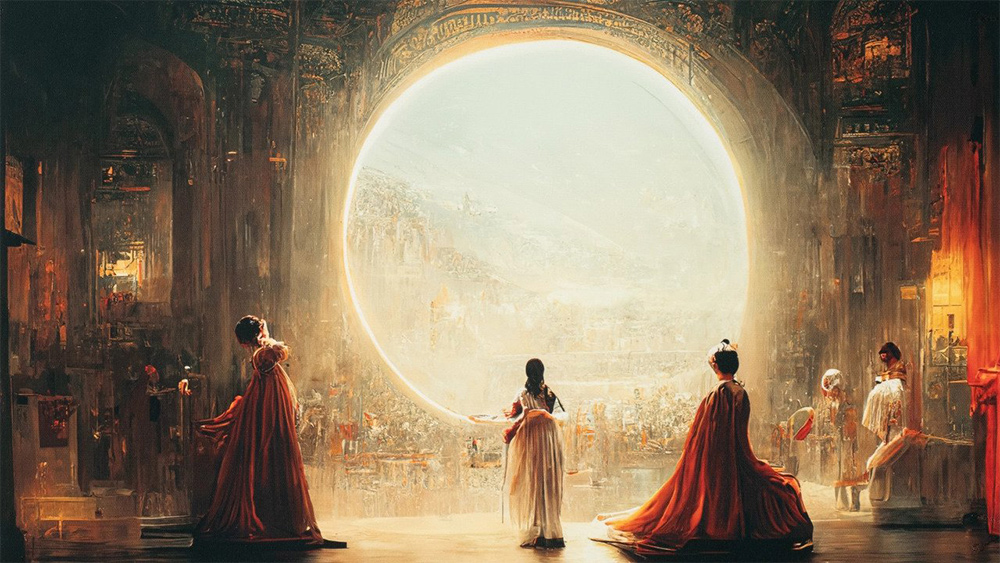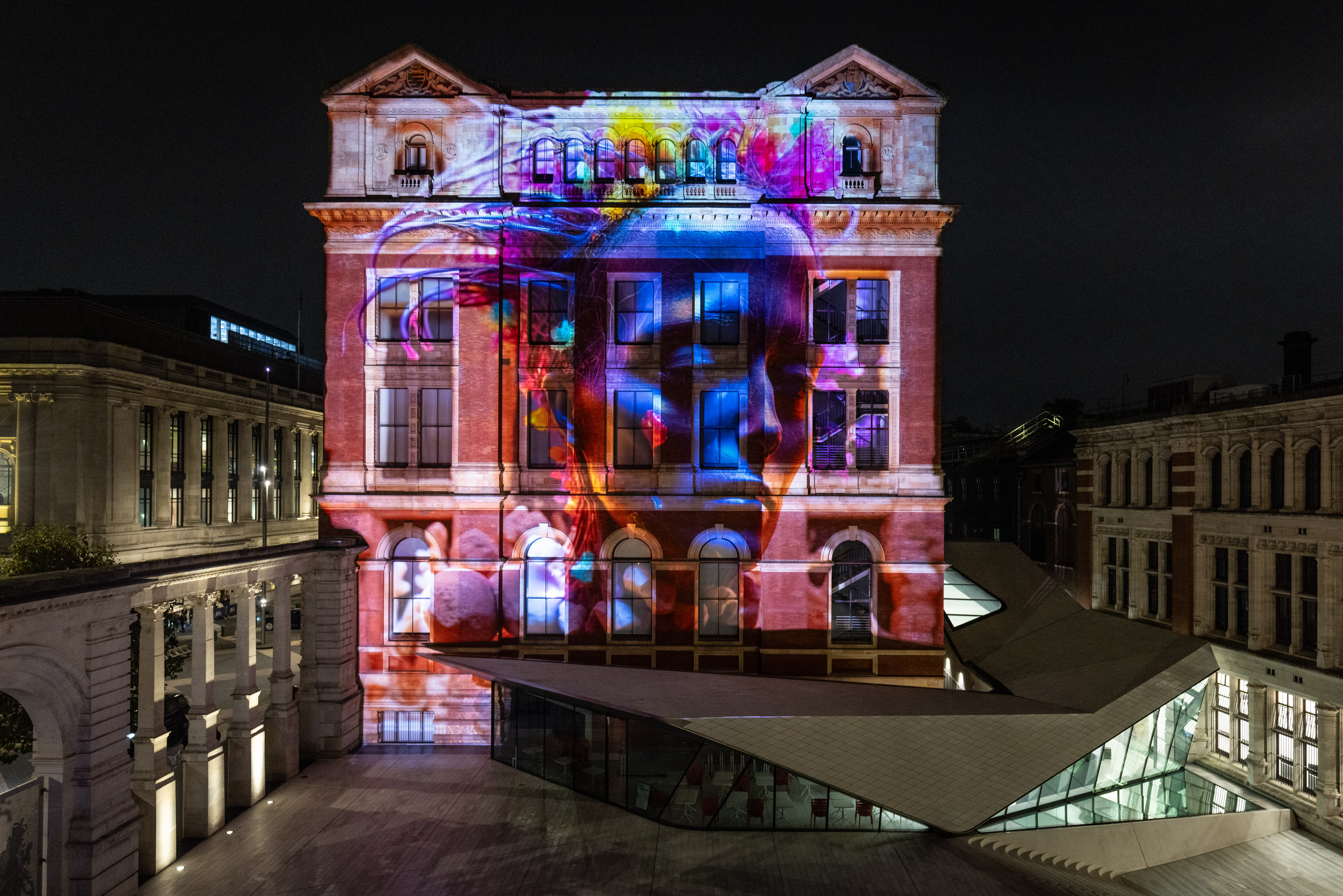AI art continued to make headlines in 2024. AI image generators have become mainstream despite a lack of clarity over copyright and other legal issues and sometimes fierce public backlash. Now even people who made AI art are complaining about their work being stolen, and the rise of the AI bot artist has people wondering if we need humans at all.
As we reach the end of the year, it's time to look back at some of the key moments in AI art in 2024, from the good to the bad and the just plain ugly. For more on the topic, see our history of AI art.
Brands get pilloried for using AI art

AI image generators may have become mainstream, but that doesn't mean people welcome AI art. During 2024, we saw brands as varied as Lego to Skechers, Netflix, Anthropologie and Transport for Ireland face fierce backlashes online as a result. Sometimes AI art is used for practical reasons (we spoke to Paula Scher about Pentagram's controversial use of Midjourney to create AI imagery for the US Federal Government's performance tracking website), but sometimes is smacks of laziness (and cheapness).
Some brands may think there's no such thing as bad publicity, and some may even have used AI art to intentionally cause controversy and get attention, but it's a risky strategy when customers say they're going to stop buying your products. And it's surprising how some brands seem to have lowered their standards: companies that would demand multiple rounds of retouching from human artists seem to be deciding that any AI-generated mess is good enough, which risks cheapening the image of the brand.
One of the most striking examples was Coca-Cola's AI Christmas ad. One of the first uses of AI video by a big brand, it risked losing the valuable brand equity of the iconic Holidays are Coming ad while contradicting the brand tagline of 'Real Magic'. The launch of Coca-Coola merchandise by Alex Morris, senior creative at Very Serious Partners, cheekily points out the extent of the brand self-sabotage.
Artist complains people are stealing his AI art

One of the reasons AI image generators are so controversial is because many were trained on human artists' work without consent or compensation. Now the users of AI image generators are having to contend with the fact that they can't copyright the images such generators produce – even if they win an art competition.
Jason Allen won a fine art competition at the Colorado State Fair back in 2022 when the judges didn't realise he had used Midjourney to create his Théâtre D’opéra. But the US Copyright Office rejected his application for the image since it lacks “human authorship". Allen has launched an appeal, claiming that the piece required 110 hours of human work and that unauthorised use of his artwork has resulted in him losing “several million dollars” because of people "stealing" his work.
Get the Creative Bloq Newsletter
Daily design news, reviews, how-tos and more, as picked by the editors.
It's another reason why using AI image generators for finished assets is so risky for brands: they could be opening a free-for-all on their own assets.
The AI artist Botto rakes in $351,600 at Sotheby's

AI image generators raised fears that human artists could be replaced by "prompt engineers", but we might not need the latter either. Botto is a fully autonomous 'AI artist' who has now raked in more than $4 million in sales at auction houses, including $351,600 in AI art sales at Sotheby's in October.
Conceived by the German artist Mario Klingemann and software collective ElevenYellow, Botto generates images based on its own ideas without human prompting, but a 15,000-member community called BottoDao decides which of its thousands of outputs to mint as NFTs each week, and their decisions help shape's the AI's own artistic taste.
Tesla rips off Blade Runner

Elon Musk went all anti-AI for a while when other companies were steaming ahead, but that changed after he launched xAI and started to play catch up. That flip involved some typical Musk impetuousness. When Alcon refused to let him use imagery from Blade Runner 2049 for the Tesla Robotaxi reveal, Musk had Grok mock up some blatant copycat AI art instead. Tesla's now being sued for copyright infringement.
Gamers don't like AI art either

It turns out that gamers aren't fans of AI art either. After the appearance of an AI-looking zombie Santa in the Call of Duty Black Ops 6, fans uncovered all manner of potentially AI-generated content in the game. Activision – and Steam – have remained silent on the matter, but the reviews are full of criticism of the allegedly AI content.
Meanwhile, gamers blasted Netfix's decision to create an AI game development studio two weeks after closing its AAA gaming studio Team Blue and laying off human developers.Mike Verdu, formerly vice president of Netflix Games and now vice president of genAI for games says he will be "driving a 'once in a generation' inflection point for game development and player experiences using generative AI."
AI Art Magazine

Finally, December saw the launch of AI Art Magazine, a twice yearly print title intended to provide a "vital chronicle of this transformative moment in art history". It features AI art chosen by a jury comprising 10 humans and an AI-generated bot called Xiaomi. The magazine aims to adopt a serious approach to AI art, but we found it hard not to think that it may be a parody after Xiaomi chose 'Girl in a Pizza Dress' as her favourite work.
The good side of AI art

Of course, the term 'AI art' can be very broad, and it isn't all controversy and derivative pastiches knocked up on AI image generators. In the broadest sense, AI art can be defined as any art made using the assistance of machine learning algorithms, and lots of interesting work has been made using AI as a tool rather than as an artist.
We liked Ouchhh Studio's use of "data as a paint and algorithm as a brush" for its projected work for the National Lottery at V&A South Kensington. The studio used a cognitive headset to capture the brain waves of seven key cultural figure and fed them through an AI algorithm to create a living canvas for the V&A’s Exhibition Road Courtyard.
AI also helped create some of the best movie VFX of 2024. Meanwhile, efforts have been made to create AI image generators that collaborate with artists rather than steal from them. Tess aims to copy and replicate the style of collaborating artists and pays them royalties when their style is used.
A big test of how much the public is interested in AI art will be the first AI art museum. With a prime location beside Los Angeles' Museum of Contemporary Art and The Broad, Dataland is expected to open in late 2025.
For more on the latest developments in the tech behind AI art, see the launch of Midjourney Patchwork. We also have a roundup of AI art tutorials.

Thank you for reading 5 articles this month* Join now for unlimited access
Enjoy your first month for just £1 / $1 / €1
*Read 5 free articles per month without a subscription

Join now for unlimited access
Try first month for just £1 / $1 / €1

Joe is a regular freelance journalist and editor at Creative Bloq. He writes news, features and buying guides and keeps track of the best equipment and software for creatives, from video editing programs to monitors and accessories. A veteran news writer and photographer, he now works as a project manager at the London and Buenos Aires-based design, production and branding agency Hermana Creatives. There he manages a team of designers, photographers and video editors who specialise in producing visual content and design assets for the hospitality sector. He also dances Argentine tango.
